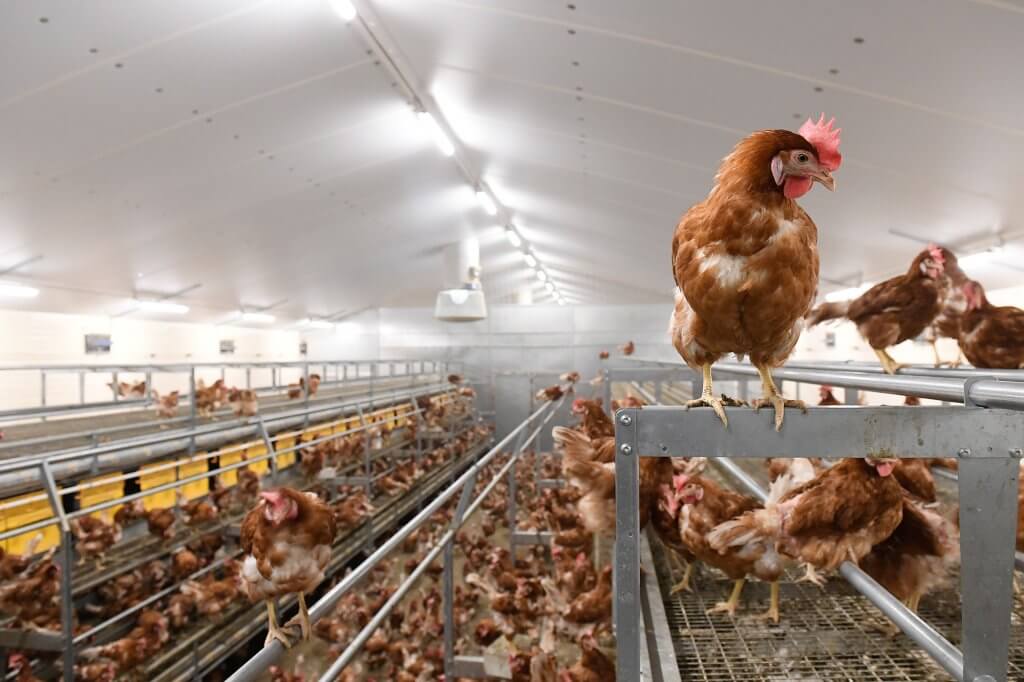Insect pests are more than just an inconvenience for poultry producers; they are devastating to the flock in the form of weight and production losses. As cage-free systems become more frequent in poultry production, we are forced to evaluate how insect control measures should adapt to ensure efficacy. Three common ectoparasites commonly encountered in poultry facilities are mites, poultry lice, and bed bugs.
Mites
There are several species of mites that attack fowl and usually occur under the feathers. All mites are highly contagious and are usually transferred by direct contact between birds.
- Northern Fowl Mites
- Poultry Red Mite
- Scaly Leg Mite
How would someone identify mites?
Mite control involves correct identification of species to target control measures to harborage areas. Mites will not likely be found feeding on workers, but mites congregating on eggs, egg flats, and walls of the house would not be uncommon. Additionally, when differentiating between mites and bed bugs, mites will be much smaller and have 4 pairs of legs in the adult and nymphal stages.
Lice
There are several species of lice that attack poultry, all of which are biting lice. Lice will not leave the bird except to pass from one host to the other, which can be more frequent in cage-free systems due to proximity of birds to one another.
How would someone identify lice?
Lice in general are very host-specific, so lice won’t be found on worker clothing the way other insects would. Sloughed feathers can be infested with lice, but most likely, lice will be seen only on the bird. Each species of lice that affect chickens occurs in a slightly different location on the bird, so it would be possible to get an idea of which louse species is present simply by looking at where they are located on the bird.
Bed Bugs
Bed bugs are an important and emerging pest of poultry production systems. Bed bugs are particularly difficult to control in poultry facilities due to their excellent hiding capabilities, resistance to insecticides, and their ability to go long periods of time without a blood meal. Both sexes feed on blood and require a blood meal to molt between life stages
How would someone identify bed bugs?
 Bed bugs can be prominent on worker clothing and will be much larger than mites, possess 3 pairs of legs. Additionally, the presence of shed exoskeletons in cracks and crevices of the facility, plus fecal spot from digested blood will be a good indication that bed bugs are present.
Bed bugs can be prominent on worker clothing and will be much larger than mites, possess 3 pairs of legs. Additionally, the presence of shed exoskeletons in cracks and crevices of the facility, plus fecal spot from digested blood will be a good indication that bed bugs are present.
Integrated Pest Management for Cage-free Poultry Producers

Integrated pest management in cage-free housing systems will involve the use of several insect control methods; a singular approach will not prove to be the most efficacious or economic. In cage-free housing systems, birds will encounter one another more frequently than in caged facilities and the ectoparasite populations can increase more rapidly than in traditional housing systems. Ectoparasite control is cage-free facilities requires a multifaceted approach.
Sanitation & Clean Outs
- Cleaning only keep the birds more comfortable; they often also reduce conducive conditions that lead to a higher number of ectoparasites.
- A full clean out and wash down prior to any empty barn residual applications can help with insecticide efficacy by removing organic material.
Cultural Controls
- Rodent and wild bird control
- Reviewing and elevating worker in/out procedures
Mid-flock treatments
- Application most often contain pyrethrin or pyrethroid active ingredients and are available in oil-based, water-based, or dust formulations.
- Oil-based insecticides are often preferred for on-bird issues because the oil carrying the insecticide will help to penetrate to the skin of the bird and can prolong the residual effects of insecticides.
Empty Barn Residual Sprays
- Pits, walls, and exterior areas are great locations for premise-applied insecticides while birds are present.
Class Rotation
- Resistance to insecticides occurs when a single class is used for an extended period and the result is reduced efficacy. It is important to rotate between insecticide classes to maintain control.
Population Monitoring
- Continuous monitoring of pest populations is integral to ensuring your control measures are working well.
Whether you are working with a traditional caged layer configuration or in a cage-free facility, utilizing integrated pest management techniques to keep your flock healthy and ectoparasite free is essential. Applications of insecticides, calculated product use, installation of physical barriers, sanitation, and continuous monitoring of pest populations will keep your birds performing at their highest potential.
